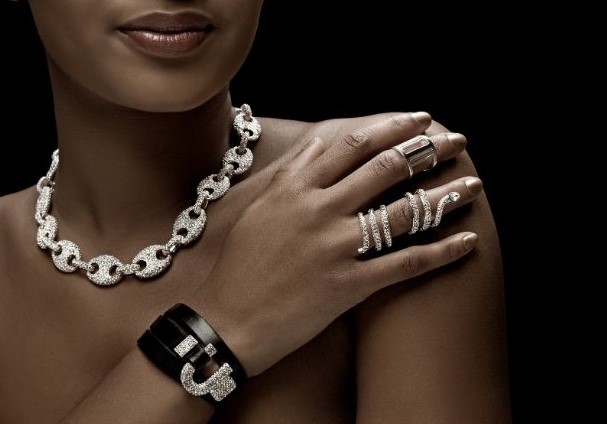

Jewelry Photography: A Guide to Taking Great Photos
Introduction
Jewelry has the unique ability to tell stories, evoke emotions, and adorn the beauty of those who wear it. Whether you’re a jewelry designer, seller, or just a passionate enthusiast, the importance of capturing stunning jewelry photos cannot be overstated. High-quality images can make your jewelry pieces irresistible to potential buyers. In this comprehensive guide, we’ll explore the art of jewelry photography, offering valuable tips and techniques to help you take exceptional photos that showcase your precious creations.
1. Prepare Your Jewelry Pieces:
Before diving into photography, ensure your jewelry is in pristine condition. Clean each piece meticulously to remove any smudges, fingerprints, or dust. Use a soft, lint-free cloth or a jewelry-specific cleaning solution to maintain their shine.
GET EXCLUSIVE ACCESS TO OUR EXPERTS THIRD PARTY PLATFORM SELLERS' TIPS AND ADVICE:
- Get AHEAD of the Competition.
- FREE Membership to Sarah’s Weekly Insiders secrets.
- FREE tailored resources and gifts.
- PLUS qualify to receive personal email support.

* We respect your privacy. We will not spam you.
2. Gather Essential Photography Equipment.
To capture exquisite jewelry photos, invest in the following equipment:
Camera: A DSLR or mirrorless camera with manual settings will provide the best control over your shots. However, a high-quality smartphone with a good camera can also yield impressive results.
Tripod: Stabilize your camera by using a tripod to eliminate blur caused by shaky hands.
Macro Lens: If you’re using a DSLR or mirrorless camera, a macro lens is invaluable for capturing intricate details.
Lighting: Natural light or soft, diffused artificial light (like a lightbox) is essential for achieving the right lighting conditions.
Backdrop and Props: Choose a neutral background that complements your jewelry. Props, such as reflective surfaces or fabric, can add texture and interest.
3. Set Up Proper Lighting:
Lighting is a critical aspect of jewelry photography. Soft, diffused lighting minimizes harsh shadows and highlights the details of your jewelry. Here’s how to achieve it:
Natural Light: Position your setup near a large window or outdoors in the shade to harness soft natural light. Use white curtains or diffusion material to diffuse sunlight if necessary.
Artificial Lighting: If using artificial lighting, consider investing in a lightbox or softbox to create even, diffused illumination. Avoid direct, harsh lighting sources.
4. Understand Camera Settings:
Whether using a DSLR or smartphone, familiarize yourself with the following settings:
Aperture: Use a lower aperture (f/2.8 to f/5.6) to create a shallow depth of field, blurring the background and emphasizing the jewelry.
Shutter Speed: Opt for a slower shutter speed to capture enough light without introducing motion blur. Use a tripod to compensate for longer exposures.
ISO: Keep the ISO as low as possible (usually 100-400) to minimize noise in your images.
White Balance: Adjust the white balance to match your lighting source for accurate colors.
5. Composition and Styling:
Framing: Position your jewelry in the frame, considering the rule of thirds or centering for different visual effects.
Angles: Experiment with various angles to capture the jewelry’s details and unique features.
Close-Ups: Use macro settings or lenses for stunning close-ups that reveal intricate details.
Depth of Field: Control the depth of field to highlight specific parts of the jewelry, such as gemstones or unique textures.
6. Post-Processing:
After capturing your jewelry photos, use photo editing software like Adobe Photoshop or Lightroom to enhance them further. Adjust exposure, contrast, sharpness, and color balance as needed. Be cautious not to over-edit, as natural and authentic images often resonate more with viewers.
7. Consistency and Branding:
Maintain consistency in your photography style and background to create a cohesive brand image. Consistency builds trust with customers and reinforces your brand identity.
Conclusion
Mastering the art of jewelry photography is essential for effectively showcasing your creations. With the right equipment, lighting, camera settings, and composition techniques, you can capture stunning images that do justice to your precious jewelry pieces. Remember, photography is a skill that improves with practice, so don’t hesitate to experiment and refine your techniques to create captivating jewelry photos that draw admirers and customers to your work.
MORE LIKE THIS...
Bringing you the latest information, ideas, products and services for your E-commerce business.
Copyright 2024 E-Market Pulse
Contact Us
We may receive compensation from partners listed through affiliate partnerships, at no cost to you. This doesn’t influence our ratings, and the opinions are our own
Subscribe to our Newsletter
Get updates on products and services specially targeted to help you succeed.
